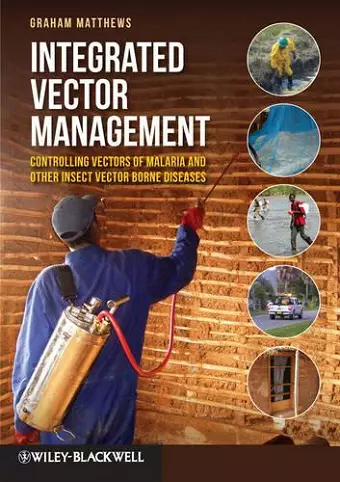Integrated Vector Management
Controlling Vectors of Malaria and Other Insect Vector Borne Diseases
Format:Hardback
Publisher:John Wiley and Sons Ltd
Published:7th Oct '11
Currently unavailable, and unfortunately no date known when it will be back

Diseases transmitted by insects continue to have a major impact on human populations. Malaria, dengue, onchocerciasis, sleeping sickness and leishmaniasis all adversely affect man. Malaria is one of the most important causes of child mortality and reduces economic development in many countries, with agricultural productivity often greatly reduced, as many vectors are active in the wet season favourable for crop production. Vector control is crucial to reduce the extent to which drugs are needed to treat the diseases, as the parasite can become resistant, or the drugs are often too expensive for those living in rural areas and urban slums most affected by these diseases.
Chemical control of vectors is often the only method that can reduce vector populations in a disease epidemic, but with vectors developing resistance to insecticides, there is increasing awareness that a single control method is often insufficient and also that chemical control must be integrated where possible with other control measures.
In Integrated Vector Management, Graham Matthews covers the main chemical methods of vector control, including the use of indoor residual spraying, space treatments, the use of treated bed nets and larviciding, but also stresses the importance of drainage schemes and improvement of houses to prevent access of indoor vectors, techniques that have largely been responsible for reducing the risk of vector borne diseases in Europe and the USA. This book combines practical information from successful vector control programmes, including early use of DDT, and recent research into a vital resource for all those now involved in combating insect vector borne diseases.
Integrated Vector Management is an essential tool, not only for medical entomologists and those directly involved in government health departments, but also for all those who provide the skills and management needed to operate successful area-wide vector management programmes. Libraries in all universities and research establishments world-wide, where biological sciences, medicine and agriculture are studied and taught should have multiple copies of this important book.
“This volume provides a nice overview of these approaches and some of the issues involved—droplet sizes, wallspraying tactics, and the like. It should be on the bookshelves of anyone involved in the fight against mosquitoes.” (The Quarterly Review of Biology, 1 June 2013)
"Essential for anyone involved in vector control or its funding... The availability of the text as an e-book on Kindle will make it available to a much wider readership and provide a portable reference for travel and field work." (International Press Control, 1 November 2011)
“Matthews has done a great job in describing the many options we have to control vector-borne diseases...both for those starting in the field, as well as veterans, the book is of value and a worthy addition to the limited number of recent books on the topic...Five Stars” Bart Knols, MalariaWorld.org
ISBN: 9780470659663
Dimensions: 254mm x 181mm x 20mm
Weight: 708g
248 pages